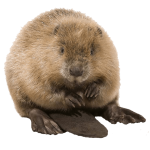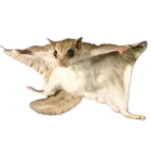How to get rid of gophers
Getting rid of gophers can be more tasking than the average pest. This is because of their resistance to getting out of the ground, and this happens nearly all of the time. The only time a gopher is willing to poke out of a burrow hole is to get a breath of fresh air and to have a look around before it delves back into its burrowing network. It’s for this reason that it can be a notorious task to remove them from your yard. If you’re prepared to take on the challenge of getting rid of a gopher yourself, here are a few pointers to take the challenge on. We’ve split this handy guide into sections, depending on what habitat you want to pluck the gophers out of.
The Backyard Blues
If you have gophers in your backyard, there will be some tell-tale signs. Their mounds, spread in circles around their holes, will most likely be plugged up with dirt. They can create many of these mounds in a short amount of time. They also cause damage to your wiring, plant patches, and will eat grass-roots into spring. You have a few options to prevent this, but the most natural will be to let your dog onto them or invest in some common traps. Dogs can be quick and can catch anything that moves with good speed. Trapping methods are more tedious and require a bit of a waiting game, but it’s the most reasonable method for a small number of them in the yard.



Kill-traps are also used commonly and are an equally reasonable method, as they can be found readily available in stores. With this, though, you bear the responsibility of disposing of the carcass rather than relocating them. It’s your choice!
The Garden Gopher
Gophers can cause irreparable damage to gardens and can cause a headache to try and remove them from your prized plants. They will stop at no end to eat the roots of your plants, and even the bulbs of your flowers! They tend to be strictly herbivorous, so gardens can become a perfect permanent habitat for them if they come across a life-rich garden, and can become resistant to being removed. You can keep an eye out for three different signs in a garden for a gopher feeding. Firstly, they can pull vegetation through the ground down into their tunnels, as they’re surprisingly strong. If you see plants sinking into the ground, it is for this reason. Secondly, they feed on roots that they come across while digging, which in turn leaves a line of dying plants/grass on their tunnel route. Lastly, they will venture out of their holes to have a snack above ground. To discourage gophers from wreaking havoc on your garden without any green-fingers intervention, you can find sonic devices on the market to repel them, as they hate the sound created by them. You can also plant some castor-oil or purge plants, but this is a riskier affair. They are poisonous to gophers, but are also poisonous to humans, and can harm children. Sonic devices are a handier option here, but both are viable.
The Farm Fields - Crop-Loving Pests
Gophers, being vegetable lovers, will find a field to be the perfect habitat for them. They don’t even have to dig above ground to find an abundant food source and a great place to stay. There is an unlimited food supply for them, both in vegetables or even in roots. They will eat seedlings in the planting season, and shelter as the plants are so densely packed. You can attempt to get rid of them in multiple ways though, so not all hope is lost. If you modify the habitat of a gopher, it will become discouraged quite easily.



Using flood irrigation, gophers will give up on trying to reroute the water and move out, forcing them to the surface. On top of this, try to lower the high- spots in your field, making the field as level as possible. This means that flood irrigation can work most effectively, and the gophers will be exposed to predators, quickly moving to make a new nest somewhere else.
Golf Course Gophers
If you own a golf-lawn, you’ll know that the grass is very hard to maintain, so having the added hassle of a gopher spotting holes on the course can be infuriating. The reason the lawns are so meticulous is for the game-play, and playmakers will pay a pretty penny for the chance of a good match on a good green. Gopher damage can ruin this entirely, skewing the field, making it uneven and unsightly. The cost of repairing the greens is expensive too and can damage the course. The gophers, when eating the grassroots, can make the green more brown and patchy. Owners typically choose more rough interventions, using toxic substances to kill pests off. There are commercial chemical repellents for these animals, so if you have a high demand for meticulous maintenance, it’s a pathway available to you. In time too, the poison baits do decompose, so they don’t pose a threat to others.
The Lawn Patch
Lastly, the lawns around your house are always a threat to gophers. At the worst, the holes that gophers create as networks under your lawn (and therefore also your house) are also creating gaps of air under your property. This can be a big structural compromise, which if uncontrolled, can form untrustworthy foundations. If you feel like you have an infestation, it should be handled as soon as possible for this reason. Lethal trapping is the most common and readily available method on the market.



However, as they spend most of their lives underground, it can still be very difficult. Other traps are also a possibility, but all traps bear the issue of the ‘waiting game’ when it comes to removal. In this case, and in all of the other cases mentioned above, it can also be recommended that you consider professional intervention, for either advice or the removal. After all, they are professionals and can provide useful information.
Select Your Animal



Raccoons
Raccoon Removal Information & How-To Tips



Squirrel
Squirrel Removal Information & How-To Tips



Opossum
Opossum Removal Information & How-To Tips



Skunks
Skunks Removal Information & How-To Tips



Rats
Rat Removal Information & How-To Tips



Mouse
Mouse Removal Information & How-To Tips



Bat
Bat Removal Information & How-To Tips



Bird
Bird Removal Information & How-To Tips



Snake
Snake Removal Information & How-To Tips



Beaver
Beaver Removal Information & How-To Tips



Mole
Mole Removal Information & How-To Tips



Vole
Vole Removal Information & How-To Tips



Gopher
Gopher Removal Information & How-To Tips



Rabbit
Rabbit Removal Information & How-To Tips



Woodchuck
Woodchuck Removal Information & How-To Tips



Flying Squirrel
Flying Squirrel Removal Information & How-To Tips



Chipmunk
Chipmunk Removal Information & How-To Tips



Coyote
Coyote Removal Information & How-To Tips



Fox
Fox Removal Information & How-To Tips



Wild Hog
Wild Hog Removal Information & How-To Tips



Dead Animal
Dead Animal Removal Information & How-To Tips